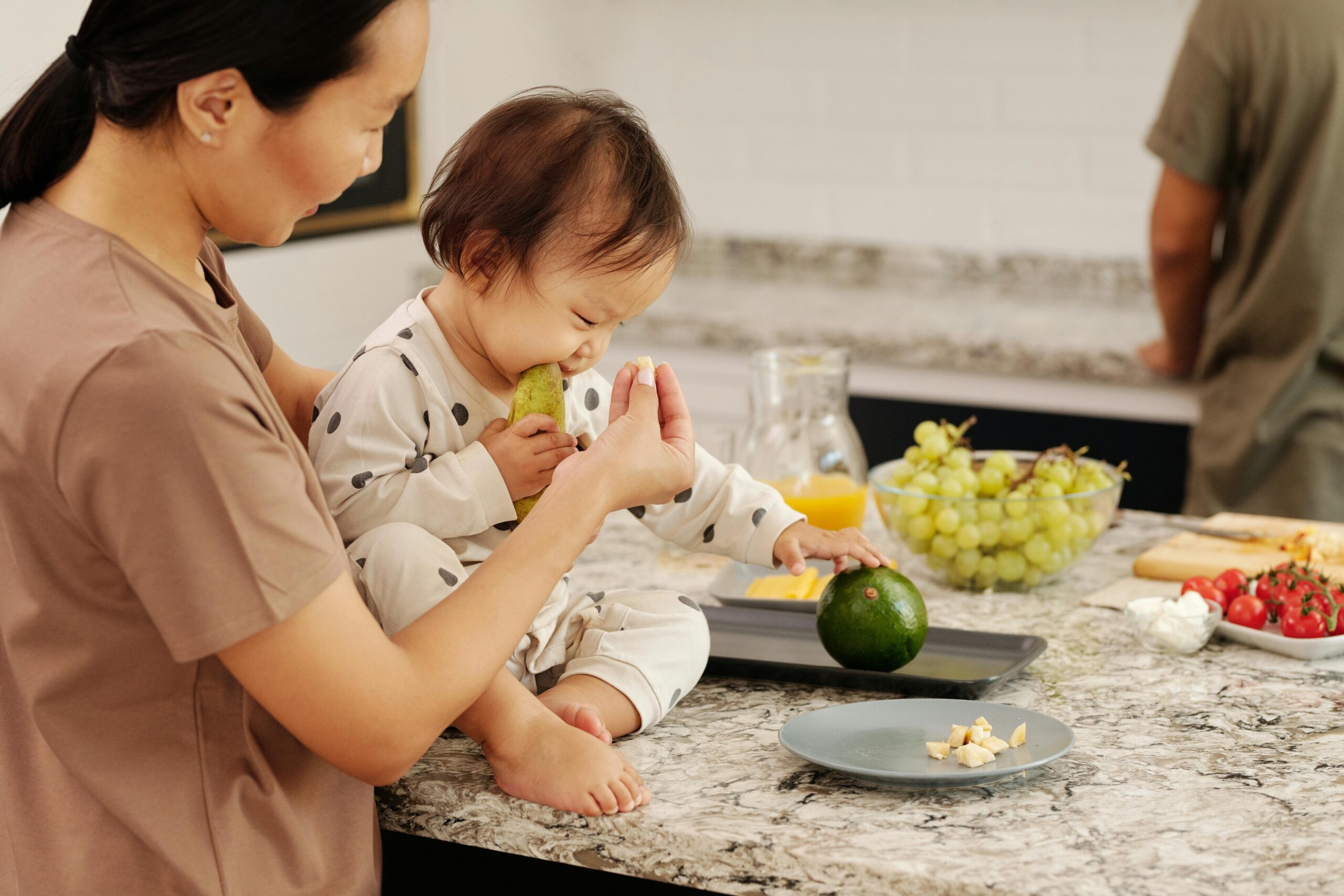As a new mother, I had a thousand questions in my mind—when to start solids, how to start, what to give first, what if he refused, and so on. I read books, saved Instagram posts, and watched YouTube videos endlessly. But nothing prepared me like the actual experience of going through it with my son. This blog is not just a guide but a heartfelt story of how I introduced healthy foods to my baby after six months and helped him develop a love for wholesome meals.
The First Six Months: A Time for Bonding
For the first six months, my baby was exclusively breastfed. It was a beautiful bonding time, and I made sure he was fed on demand, day and night. There were sleepless nights and growth spurts, but I held on, knowing that I was giving him the best start possible. However, as he reached six months, I started to notice some signs—he would watch me eat, reach for my plate, and mimic chewing. It was clear he was ready for something new.
Emotional Preparation: Letting Go of the Breastfeeding-Only Phase
As exciting as it was, I must admit I felt emotional. Introducing solids meant the beginning of independence. It was a reminder that my little baby was growing up. I had to accept that breast milk alone would no longer be enough to meet his nutritional needs.
So, I began preparing myself mentally. I didn’t want mealtime to become a stressful experience. I wanted to enjoy it and help him enjoy it, too.

My First Step: Choosing the Right Time and Setting
I chose a quiet, calm time in the morning when my baby was not too hungry or too sleepy. I put him on my lap, gave him a spoon to play with, and kept distractions away. This helped him associate mealtime with focus and connection.
His first solid meal? A small mashed banana. It was soft, naturally sweet, and easy to digest. I offered only a tiny spoonful, and he made a funny face, as if to say, What is this strange thing? But he swallowed it. That was enough for the first day.
Building the Foundation: One Food at a Time
I followed the golden rule of introducing one new food every three days. It helped me check for allergies or sensitivities and allowed him to explore new flavors gradually.
Here’s how I began:
- Week 1: Mashed banana, mashed boiled potato
- Week 2: Steamed and mashed apple, mashed sweet potato
- Week 3: Mashed rice with breast milk, plain lentil soup (strained and cooled)
- Week 4: Carrot puree, mashed pumpkin
He didn’t always eat it all. Some days he had a few spoons, and other days he barely opened his mouth. But I reminded myself—this was about introducing, not replacing breast milk.

Breast Milk as a Bridge
In the beginning, I made most of his food using breast milk. I would mash rice or boiled veggies and mix them with a little breast milk. The familiar taste reassured him. It also made the transition smoother because he could still taste something he already knew and trusted.
Some of his early favorites were:
- Rice cereal with breast milk
- Mashed dal with a spoonful of breast milk
- Mashed potato with a few drops of expressed milk

Creating a Safe, Familiar Routine
Instead of waiting for the “perfect” time each day, I created a flexible but consistent routine. I made sure he had solids once a day in the beginning, then increased it to twice a day after a few weeks.
He had a small meal mid-morning, after his nap and a breastfeed. Then, by 8–9 months, I added a second small meal around 4 p.m.
Even if he refused food some days, I still offered it without pressure. It became a part of his day, like bath time or playtime.
Involving All the Senses
I let him touch, smell, and even squish his food. He’d play with steamed carrot sticks and squash rice in his tiny fingers. Yes, it was messy, but it was also how he learned.
Sometimes, he’d bring food to his mouth on his own. I never stopped him, even if he made a mess or gagged a little. These were learning moments.

Gradually Expanding the Menu
By the seventh month, I introduced more texture and variety. I didn’t want him to become too used to only pureed foods. So I started giving him mashed khichuri (a mix of rice, lentils, and vegetables), mashed boiled egg yolk, and small spoons of homemade unsweetened yogurt.
By nine months, his meals looked like this:
- Breakfast: Mashed banana or suji (semolina) cooked with water
- Lunch: Soft khichuri with mashed vegetables
- Afternoon: Mashed apple or pear, sometimes yogurt
- Dinner: A light mashed version of what we ate (dal with rice or vegetables)
I always ensured the food was mild and free of salt and sugar.
Managing Rejection and Fussiness
There were plenty of days when he refused to eat. Sometimes he cried at the sight of the spoon. Other times he’d spit everything out. I learned not to take it personally.
Instead of insisting, I’d stop and try again later or offer breast milk. I didn’t turn mealtime into a battlefield. Over time, I discovered a few tricks:
- Offering the same food after a few days
- Mixing disliked items with favorites
- Changing the texture or temperature
- Making silly faces or noises to make him laugh
Eventually, he accepted spinach when I blended it into lentils. And yogurt became tolerable when mixed with a little mashed mango.

Letting Him Eat What We Eat—A Baby Version
By ten months, I started giving him a softer, bland version of our meals. I avoided chili and salt but offered mashed fish (carefully deboned), lightly spiced vegetables, and soft pieces of roti soaked in dal.
This helped him become familiar with the flavors we ate daily. It also made meal prep easier because I didn’t need to cook a separate dish just for him.
Learning to Chew: A Big Step
Chewing was a big milestone. I slowly introduced finger foods—soft boiled veggies, small rice balls, thin slices of ripe banana. At first, he gagged often, and I panicked. But I learned that gagging is normal in the beginning.
By practicing with soft solids, he gradually learned how to move food around in his mouth and chew.

My Biggest Lessons as a First-Time Mom
This journey taught me so much, not just about baby nutrition but about patience, trust, and confidence as a mother. Here are some lessons that truly stayed with me:
- Patience is key. Some days he ate well, and some days he didn’t. Both were normal.
- Trust your baby. They often know how much they need.
- Respect hunger and fullness cues. I never forced another spoon if he turned away.
- Make mealtime happy. We sang songs, played peek-a-boo, and made eye contact.
- Don’t rush. There’s no timeline that every baby follows.
Fast Forward: A Healthy Eater Today
Now that my son is five years old, I can say that those early food habits shaped his preferences. He enjoys fruits, vegetables, and lentils. He’s not perfect—he still fusses over some dishes—but overall, he has a healthy appetite and a balanced diet.
I truly believe it all began with the slow, loving, and patient approach we took after six months.

FAQ
When should I start giving my baby food other than breast milk?
According to the World Health Organization, solid foods should be introduced at six months alongside continued breastfeeding.
What’s the best first food for babies?
Single-ingredient foods like mashed banana, steamed apple, or mashed rice mixed with breast milk are ideal first foods.
How do I know my baby is ready for solids?
If your baby can sit with support, shows interest in your food, opens their mouth when offered food, and has good head control, they may be ready.
What foods should I avoid for babies under one?
Avoid honey, cow’s milk, added salt, sugar, nuts (whole), and choking hazards like grapes or raw carrots.
What if my baby doesn’t want to eat?
That’s completely normal. Keep offering food without pressure. Continue breastfeeding and try again later. Repetition and patience work wonders.








